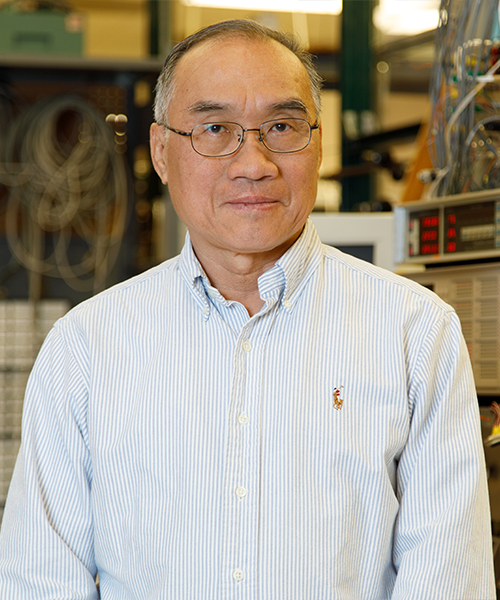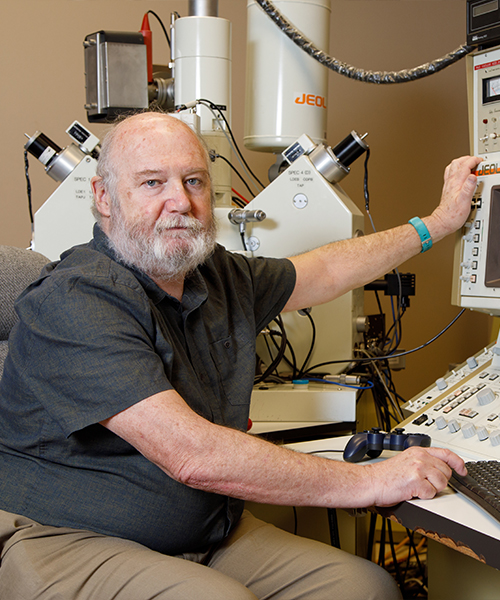TcSUH EventS

Bi-Weekly Seminar
A Complete Charge Model of the Under-doped La2-xSrxCuO4 Superconductors
by: Prof. Pei Hor
Date: Friday May 21, 2004
Time: 12:00 pm – 1:00 pm
Location: Houston Science Center – Building 593 — Room 102
Overview
Based on the transport and far-infrared (far-IR) reflectivity measurements in the direction parallel (ab-plane) and perpendicular (c-axis) to the CuO2 planes, we present a complete picture of the electronic structure of La2-xSrxCuO4 (LSCO) superconductors in under-doped regime. Contrary to the common belief, we found conclusive experimental evidence that the c-axis charge transport is intrinsically coherent and the c-axis scattering rate (?c) is extremely small and temperature (T)-independent. Our findings suggest that the normal state of LSCO in the under-doped regime is an unconventional anisotropic metal built upon a three-dimensional (3D) Wigner hole lattice resulting from the 3D ordering of the two-dimensional (2D) square hole lattices formed in the ab-planes.
Back to TcSUH News & Events
Special Seminar
The Promise of MgB2 Superconductors in Electric Power Energy
by: Prof. Kamel Salama
Date: Friday May 07, 2004
Time: 12:00 pm – 1:00 pm
Location: Houston Science Center – Building 593 — Room 102
Overview
Since the discovery of its superconductivity in early 2001, Magnesium Diboride (MgB 2) has drawn a great deal of worldwide research interest. This new high temperature superconductor has a critical temperature of 39.4 K, an upper critical ?eld of 29 Tesla, and a relatively long coherence length of about 5 nm. In addition, MgB 2 exhibits no intrinsic current blockage by grain boundaries and comparatively weak anisotropy and thermal ?uctuations. Research on MgB2 at TCSAM demonstrates promising results of high current carrying capability sustained to applied magnetic ?eld in the temperature range of liquid hydrogen and liquid neon. Thirty-meter long Fe-sheathed MgB 2 wires and tapes have been fabricated using the powder-in-tube method with ultra-?ne starting precursors. High critical current density of 3 x 105 A/cm2 at 20 K and self-?eld has been obtained. Coils wound from MgB 2 wires also possess superior superconducting properties. These results reveal the promise of MgB for electric power applications at 20-5 K.
Back to TcSUH News & Events

Bi-Weekly Seminar
Nanoscale Modulations in Optimally Doped and Underdoped YBCO: X-ray Evidence and Theory for Atomic Displacements in the Higher-Order Ortho Phases
Date: Friday April 30, 2004
Time: 12:00 pm – 1:00 pm
Location: Houston Science Center – Building 593 — Room 102
Overview
High intensity x-ray measurements at the undulator line of the Advanced Photon Source have shown a distinct pattern of diffuse satellites about the normal Bragg peaks which possess a characteristic asymmetry and have a correlation range of only 4-5 unit cells in all directions. Measurements made at 7K show an intensity distribution about the Bragg peaks which strongly resemble those found in totally disordered tetragonal YBCO doped with Al, indicating substantial disorder within these modulated regions. An intensity ?t for the optimally doped crystal reveals a pattern of modulations along the a-axis with a strong c-axis component of the Ba atoms. In the underdoped crystal, an ab initio calculation of the relaxed atoms in the modulated Ortho-V phase gives nearly perfect agreement with former experiments, leading to the unavoidable conclusion that these crystals show essentially diffusion-limited formation of imperfect Ortho phases predicted some years ago by de Fontaine and co-workers. They are thus of static origin, and have little to do with stripes, CDW’s, or soft optic phonons.
Back to TcSUH News & Events

Bi-Weekly Seminar
Higher Jc at Reduced Pinning Potential
Date: Friday April 16, 2004
Time: 12:00 pm – 1:00 pm
Location: Houston Science Center – Building 593 — Room 102
Overview
In a decade of study it has been frequently noted that continuous columnar pinning centers provide the largest pinning potential, Upin. It has been assumed therefore that such pinning, e.g., created by ions, provides the highest values of Jc, and pinned field, Bpin. Generally, studies of columnar pinning are discontinued at pinning center densities beyond which Jc is observed to decrease. It has also been broadly noted that such decrease is due to degradation of the order parameter and the critical current, Tc. We previously reported theoretical findings that Jc and Bpin were limited by the pinning center microstructure, not Tc, and could be markedly improved by reducing the damage incurred in the formation of pinning centers, even though Upin is reduced in the process. We now report experimental results. Spatially discontinuous melting occurs for ions having Se dE/dx 0.7 ke. This becomes continuous for Se 3.5 ke. We studied the interval 1.4 Se < 4.0 ke, using parallel ions (no splay). We find Jc is higher by a factor of 6 at Se ~ 2.0 ke (intermittent columns) than at Se ~ 3.5 ke (continuous columns), despite the fact that Upin is reduced by ~ 75% at the lower Se. In addition, pinnable field is increased by factors > 10 at the lower Se. Future basic studies and application to current problems of interest will be discussed.
Back to TcSUH News & Events

Bi-Weekly Seminar
Oxygen Ion Conductivity and Electronic Conductivity in the Bi-Ru-Alkaline Earth Oxides
Date: Friday March 26, 2004
Time: 12:00 pm – 1:00 pm
Location: Houston Science Center – Building 593 — Room 102
Overview
Bismuth-alkaline earth oxides include a rhombohedral solid solution that is a very good oxygen ion conductor perpendicular to the c-axis at relatively low temperatures (1 S cm-1 at 600-700°C). There is complete mutual on-site solubility between Ba, Sr, and Ca. The Bi content ranges from <10 to 30 cation %. The conductivity mechanism, the variation of conductivity and other properties of the oxide with temperature, and the phase relations of this phase will be discussed. The rhombohedral oxide dissolves many materials potentially used as electrodes. We have synthesized a new rhombohedral oxide saturated in Ru. It has the same oxide conductivity as the Ru-free phase. Phase relations in the Bi-Ru-Sr-Ba-O system will be discussed. The rhombohedral phase is in equilibrium with an alkaline earth ruthenate (not ruthenium oxide) under oxidizing conditions. Alternative electrode materials include Bi-Ru pyrochlores.
Back to TcSUH News & Events
